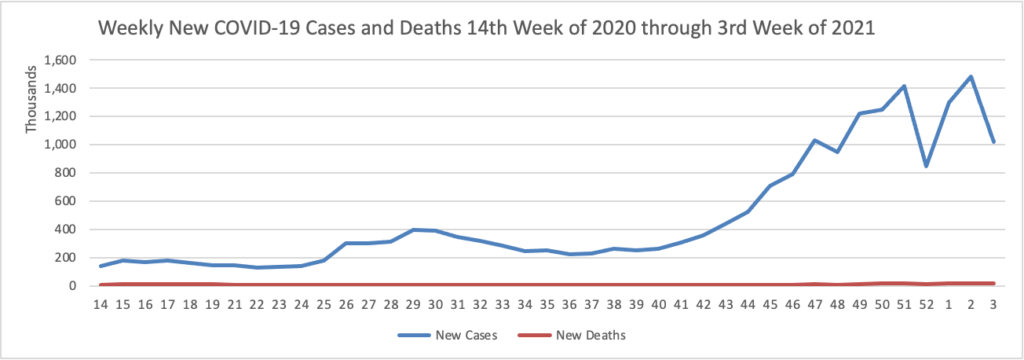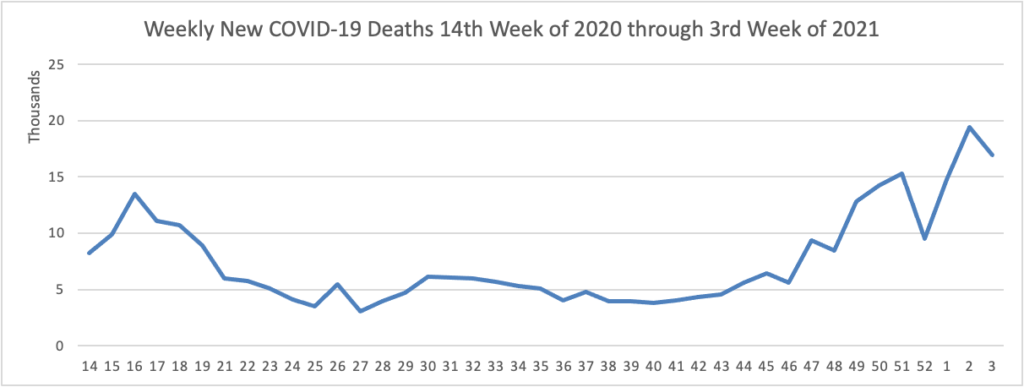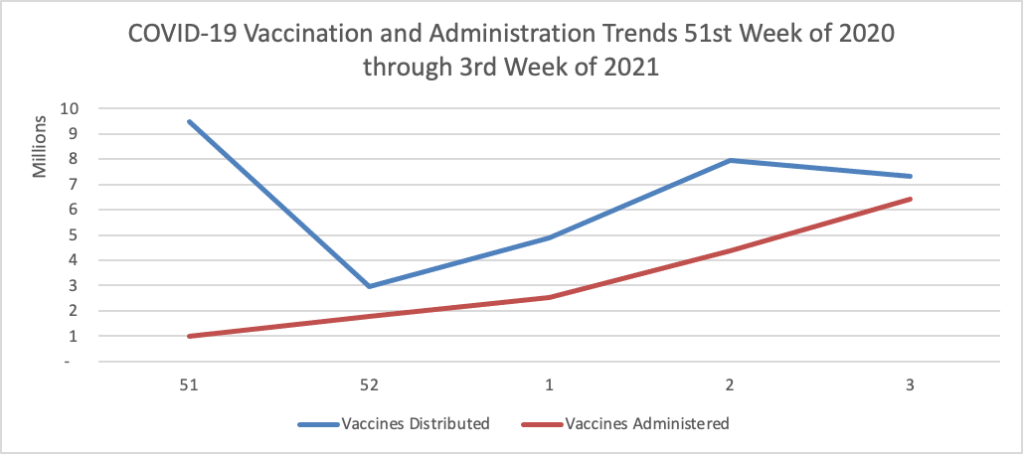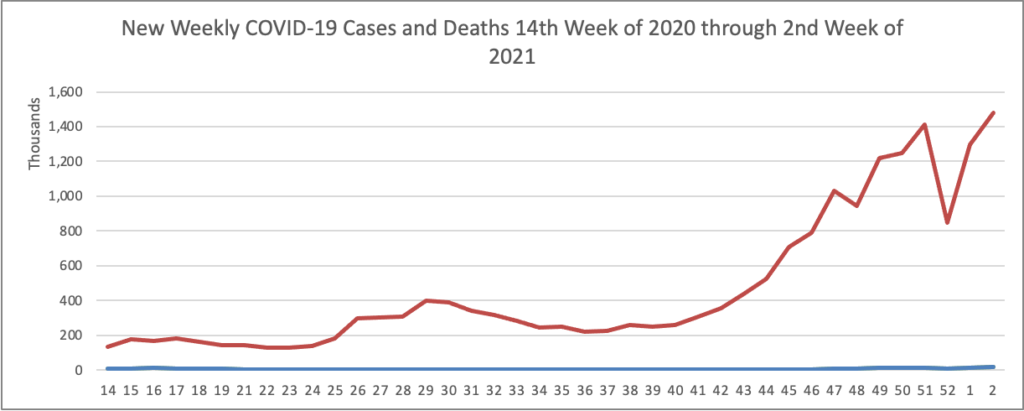Tuesday Tidbits

The Wall Street Journal has performed a tremendous public service by publishing a state-by-state guide to obtaining a COVID-19 vaccination. The information is current as of yesterday and will be updated weekly.
STAT News reports that Regeneron and Eli Lilly are pleased with progress being made in their respective trials of monoclonal antibody cocktails to treat COVID-19. “George Yancopoulos, Regeneron’s chief scientific officer, said in a statement that even with vaccines available, the antibody will be able help break the chain of infection, and may prove useful for individuals who are immunocompromised or unable to be vaccinated.”
Employee Benefits News offers an interesting story about how employers are confronting the opioid public health emergency.
Health Payer Intelligence discusses Blue Shield of California’s efforts to consolidate and simplify medical billing. What’s more,
[Blue Shield of California] aim[s] to achieve real-time claims settlement. In 2020, Blue Shield of California shortened its claim settlement timeframe from a maximum of 30 days down to six days, but in 2021 the company plans to reduce that timeframe further.
“For us, ‘real-time’ claims settlement means anywhere from three to nine seconds,” [Shayna] Schulz[, senior vice president of transformation and operations at Blue Shield of California] explained.
“We have a proof of concept that we’ve already done where we’ve been able to process one claim—but it starts with one—in nine seconds. We’re highly optimistic that we can rapidly scale this in 2022. And that’s going to be a game-changer for many hospitals.”
Indeed.
Because the FEHBlog cannot forget the SolarWinds backdoor hack, Cyber Scoop lets us know that
Email security firm Mimecast on Tuesday confirmed that the hackers behind the SolarWinds espionage campaign compromised a software certificate the firm uses to secure connections to Microsoft cloud services. The revelation underscores how deeply embedded the suspected Russian hackers have been in major technology companies as part of a campaign that has also breached multiple U.S. federal agencies. * * * Mimecast is one of many big tech firms to be implicated in the hacking campaign, which has also exploited bugged software made by SolarWinds, a Texas-based federal contractor. The attackers have viewed Microsoft’s source code and stolen the red-team tools that security firm FireEye uses to test clients’ defenses.
Finally, STAT News published today the story written by one of its star reporters Sharon Begley about lung cancer contracted by never-smokers.
Cigarette smoking is still the single greatest cause of lung cancer, which is why screening recommendations apply only to current and former smokers and why 84% of U.S. women and 90% of U.S. men with a new diagnosis of lung cancer have ever smoked, according to a study published in December in JAMA Oncology. Still, 12% of U.S. lung cancer patients are never-smokers.
Scientists disagree on whether the absolute number of such patients is increasing, but the proportion who are never-smokers clearly is. Doctors and public health experts have been slow to recognize this trend, however, and now there is growing pressure to understand how never-smokers’ disease differs from that of smokers, and to review whether screening guidelines need revision.
“Since the early 2000s, we have seen what I think is truly an epidemiological shift in lung cancer,” said surgeon Andrew Kaufman of Mount Sinai Hospital in New York, whose program for never-smokers has treated some 3,800 patients in 10 years. “If lung cancer in never-smokers were a separate entity, it would be in the top 10 cancers in the U.S.” for both incidence and mortality.
Ms. Begley was a never-smoker who succumbed to lung cancer on January 16, 2021. RIP.












